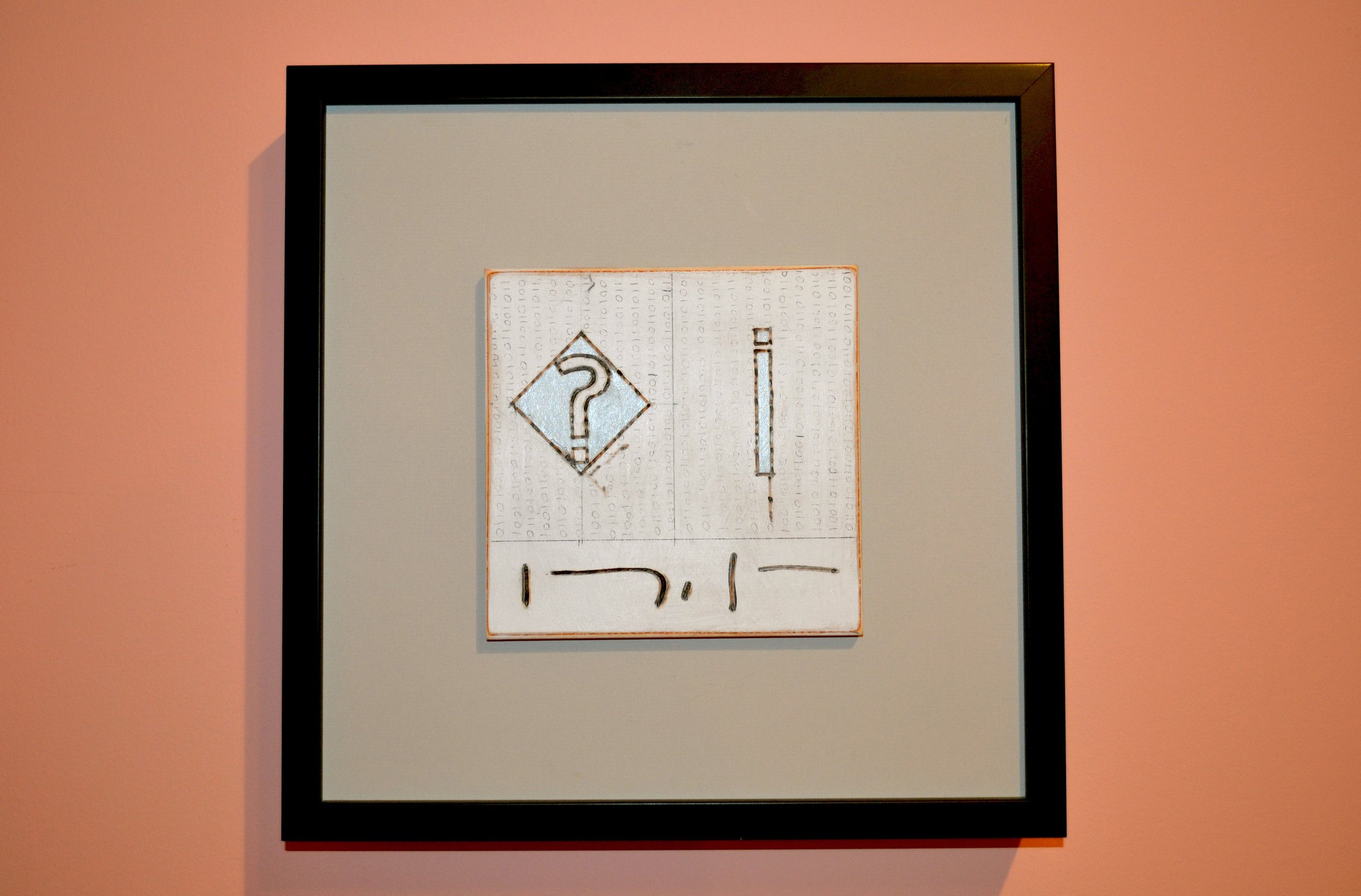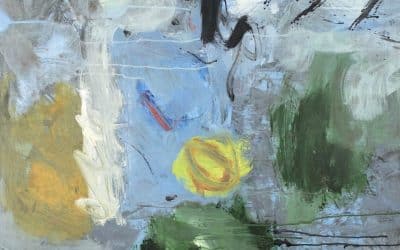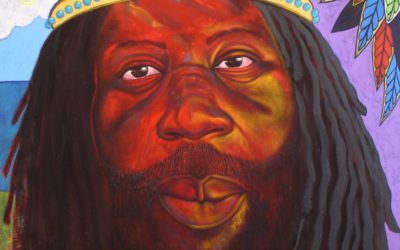
By Natalie Willis.
Writer, artist, craftswoman, gallerist, designer, filmmaker, potcake lover, and any other number of titles and markers possible. How do we begin to identify ourselves? Artist is a simple enough term, easily applicable to whoever might be involved. But when we get into craftsman or craftswoman, things get a bit more tricky. Margot Bethel fits into all of the above, in addition to being a master carpenter ( or should we say carpentress?), and her work in the current Permanent Exhibition at the NAGB delves into this idea of gendering and binary, and playfully hints at its futility in the world.
Bethel, in addition to being an artist and carpenter, was also the founder of the informal downtown art space, The Hub, which opened back in 2008, as well as being a founding member of the Junkanoo scrap group “Sperit”. This Jack (or Jane) of all trades refuses to be categorised, and this is precisely what makes this piece work. “Who the Hell Do I Think I Am?” (2012) seems simple enough at first, a drawing on wood, with the “i” and a question mark very obviously giving a nod to identity, easily visible from across the room. But upon further inspection, getting just a bit closer, we can see that there is a repeating pattern of 0’s and 1’s, faintly in the background. This patterning isn’t quite circles and dashes so much as it is representative of binary code, the very thing that makes our beloved computers and phones work. It is also representative of the wider idea of binaries – the “either/or”, the “this or that”.
Binaries are helpful in some cases, they are the way we begin to understand the world around us, by breaking things down into simple categories to make sense of our environment. But largely, binaries do not give us the nuance of life – binaries of hot and cold do not help us to understand what winter sun feels like, what warm feels like. Binaries also become particularly difficult when we think of sex and gender issues, as we suspect Bethel is alluding to. Male and female seems quite straightforward, but what of intersex people? How does a binary work when someone might be born with reproductive organs that do not match the gender we associate them with? Why is it that “male” can be a carpenter easily, but when “female” is a carpenter it seems surprising? Even more, we understand the binary of “black” and “white” when it comes to racial issues, but what of people like Bethel who lie between this, as so many of us do? Her mere existence complicates this idea of “one or the other”, but she does so in subtle, wry ways.
Bethel’s practice gets to the heart of how arbitrary many of these ideas become when we confront our actual reality. Language lies at the heart of this, be it spoken, a digital code, or a dialect, and this is where Bethel’s work fits into “Hard Mouth: From the Tongue of The Ocean”. Bethel shows her craftsmanship and keen understanding of moving material in the world with whatever she constructs, as she is incredibly skilled at making, but she is also clearly a keen thinker and ready to ask questions, which holds just as much value in her practice.
The playfulness of her wider practice easily draws viewers in, and she currently has an interactive work on view at the D’Aguilar Art Foundation that you can see for yourself. But her playfulness belies the seriousness of the subject matter she deftly handles. Like bees to flowers, we are drawn in, and before we get a chance to realise, Bethel pulls us, gently almost, to begin to confront the mythology of many of the things we believe, to turn things on their heads, to look at the gray area. Clever and playful, it is an opener for conversations we need to have, in language on our own terms.

